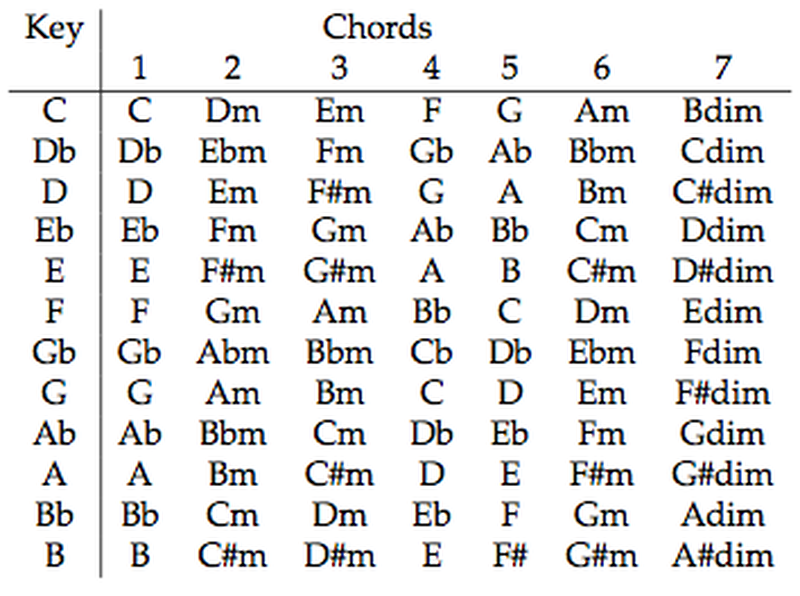👋 Hello
This blog shows chords for major and minor scales (mainly used for me to practice/memorize the scales)
Major Scale Chords
The major scale, often heard as the "Do-Re-Mi" progression, is uplifting and bright. When we extract chords from this scale, we get a sequence of major, minor, and diminished chords. These chords provide the backbone to most classical and popular music melodies. Played in sequence, they convey a sense of resolution, with the last chord naturally leading back to the first, completing the musical circle.

I-IV-V-I: This is one of the most basic and frequently used chord progressions.
I-V-vi-IV: This progression is ubiquitous in pop music. (eg. Someone like you)
ii-V-I: Common in jazz music. While many jazz standards like "Autumn Leaves" and "All The Things You Are" feature it, they might not be "famous" in the pop sense.
I-vi-IV-V (or I-vi-II-V): Also known as the 50s progression because of its popularity during that decade.
vi-IV-I-V: A variant of the previous progression, popular in many modern pop and rock songs. (eg. I just called to say love you, When I was your man)
Minor Scale Chords
In contrast to the major scale, the minor scale has a moodier, more introspective sound. The chords derived from this scale echo its melancholic tone. While major chords sound resolved and complete, minor chords possess a yearning quality, often evoking emotions of sadness, nostalgia, or introspection.

i-iv-v-i: A basic minor progression.
i-VI-III-VII: A popular progression in minor keys. (eg. While My Guitar Gently Weeps)
ii°-v-i: A common minor jazz progression.
i-iv-VII-III: Another popular progression in minor keys. (eg. Comfortably Numb)
i-VII-VI-V: Used frequently in rock and pop songs.
The Famous Song:
B- F# A E G D E- F#
I - V - VII - IV - VI - III - iv - V